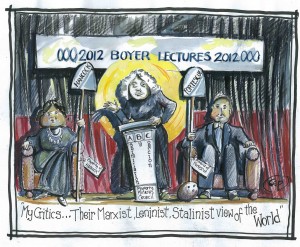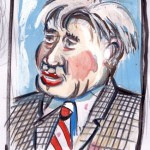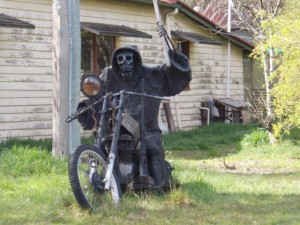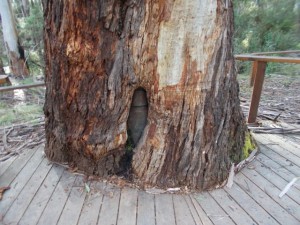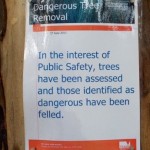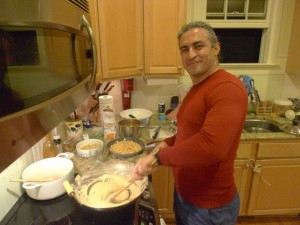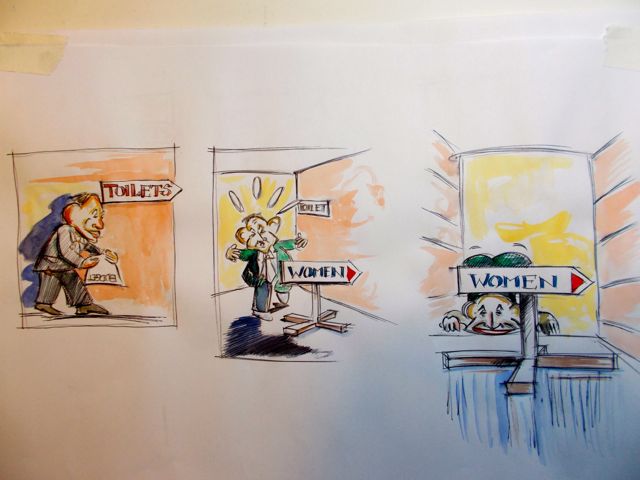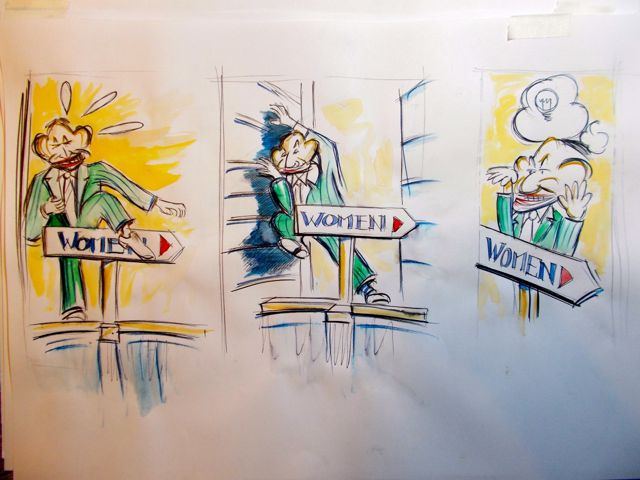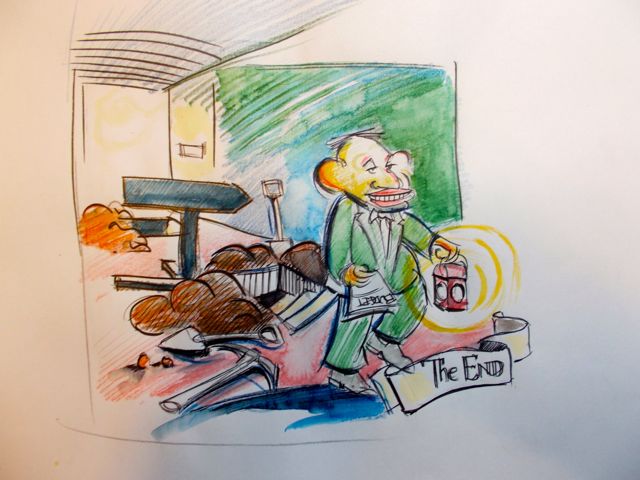Passive Complicity has taken some interest in our new Government’s indigenous policies. Prime minister Abbott has appointed three prominent indigenous people, Warren Mundine, Noel Pearson and Marcia Langton, to his Indigenous Advisory Council. Indigenous people suggest these three are assimilationist and unrepresentative of the indigenous population. In “White Sheep of the Family” Gary Foley wrote of Warren Mundine. Gary Foley wrote of Noel Pearson in a piece first published back in May, in the indigenous magazine Tracker.
THE CONTRARIAN: Liberation through acquisition
BY GARY FOLEY, MAY 6, 2013
NATIONAL: Melbourne was recently privileged to receive a visit from Queensland’s most famous Lutheran since peanut farming Premier Joh Bjelke-Peterson.
I refer, of course, to the corpulent and verbose Aboriginal Man of the Moment- Mr Noel Pearson.
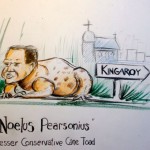 Whilst Mr Pearson is apparently unkindly referred to by many in Aboriginal communities around Australia as the ‘Cape York Cane Cane Toad’, he nevertheless is a popular man among the strange and disparate collection of his white acolytes in Melbourne.
Whilst Mr Pearson is apparently unkindly referred to by many in Aboriginal communities around Australia as the ‘Cape York Cane Cane Toad’, he nevertheless is a popular man among the strange and disparate collection of his white acolytes in Melbourne.
And they turned out in droves on this recent visit to Melbourne. Well, when I say ‘droves’, I mean about 70 of them turned up to hear his launch of the book version of Marcia Langton’s controversial Boyer Lecture Series.
It is always an instructive exercise when Mr Pearson visits this fair city in the south because one gets to observe just who constitutes his admirers and followers down this way.
His launch of Prof Langton’s Boyer Lectures book was held at University of Melbourne so one would not have expected many Aboriginal people to be in attendance because of the location alone. But even if it had been held at the Aborigines Advancement League I doubt whether the attendance of blackfellas would have been much higher than the three or four who turned up at Melbourne uni (and of those 4 who were at the book launch two of them were Marcia and Noel).
This is interesting because it is a vivid illustration of the fact that the followers of Australia’s best known Aboriginal political figure are almost exclusively upper middle-class white people. But as I said before, whilst they are almost all Anglo-Australians, they are a strangely disparate bunch.
Pearson’s admirers and followers in Melbourne range from Murdoch media attack dog Andrew Bolt, through wealthy corporate boardrooms and influential legal circles and include just about every right-winger in Melbourne. But given Noel’s hard line assimilationist ideas it is not surprising that he should be so admired among the political Right.
What is surprising is that also among his ardent following are “progressive” people who should know better, but who seem dazzled by his articulate and pompous declarations and his interminably long speeches.
And let’s face it, Pearson is a gifted orator in style and technique. However the problem for me is not in his style and technique but rather in the substance of the message he promotes.
Over the past two decades Noel has become the dominant voice in Aboriginal Australia. Or, to be more precise, has been avidly promoted by all sections of the Australian media as the voice to be heard. His political dominance is primarily due to the extensive coverage of his ideas in influential media outlets owned by Rupert Murdoch.
But Pearson has also been for years provided with acres of space in the Australian newspaper to push his political agenda, and after Prime Minister John Howard’s remake of the ABC in 2003 when he installed the likes of Keith Windshuttle, Janet Albrechtsen, and Ron Brunton onto the Board, the ABC has since become a compliant advocate for Pearson’s agenda as well.
Furthermore, if one also includes the supposedly “progressive” Monthly magazine among those providing a significant forum for Pearson, then one begins to realise that Pearson’s views monopolise almost the full spectrum of available outlets.
Pearson’s voice and ideas are being promoted and heard to the exclusion of all others voices from Aboriginal Australia.
Therein is the major reason for his being the dominant voice.
It also provides an understanding of why Premiers and Federal Ministers for Aboriginal Affairs jump whenever Mr Pearson has a hissy fit (such as QLD Premier Campbell Newman backflipping recently when Noel objected to a policy decision).
It is clear that Pearson is happy to use his political dominance to get his own way, but the question is whether Pearson’s way is a good way for Aboriginal people to go.
Noel’s speech launching Prof. Langton’s Boyer book was in part a reiteration of his assertions about what is the way forward for Aboriginal people. The familiar Pearson themes of the importance of individual home ownership and entrepreneurialism were there, as well as the tiresome chastising of those who don’t support these contentions as being ones who are tolerant of domestic violence and child abuse.
This latter accusation is particularly disingenuous because it implies the solitary way one can combat social dysfunction is through the path of individualism, materialism and free-enterprise entrepreneurialism. If that is the case, then it is clear that what Pearson’s ideas are ultimately about is pure and simple assimilationism.
Assimilation, both as an idea and government policy, was discredited and dispensed with almost fifty years ago along with the equally discredited “White Australia Policy”. Yet we see today a resurgence of these old assimilation ideas, largely through the pronouncements of the dominant Aboriginal political personality.
It should come as no real surprise that Noel Pearson is an advocate of ideas designed to recreate Aboriginal people as brown, middle class Australians. In his speech launching Prof. Langton’s book, he solemnly declared, “…I myself am bourgeois..”.
This is not news, though interesting in the sense that my dictionary defines Bourgeois as, “a person whose political, economic, and social opinions are believed to be determined mainly by concern for property values and conventional respectability.”
His own self-description then places him at odds with the ideas and values of most Aboriginal Australians, yet he is avidly promoted by his powerful friends in the media as the most admirable Aboriginal spokesperson around.
I have no problem with Pearson aspiring to middle-class ideals. It should come as no surprise given his upbringing in a Lutheran family on Joh Bjelke-Peterson’s favoured Lutheran-run mission in QLD, and his continued indoctrination when he became a boarder at a private school, namely St Peters Lutheran College in Brisbane. He later studied Law and History at University of Sydney.
Thus it is understandable that Noel should be steeped in the values and ideas of the white middle-class establishment. And like I said, I have no problem with Pearson holding ideas that seem to be the antithesis of an Aboriginal outlook on life. He is entitled to his ideas and he is no doubt eloquent in his expression of them.
The problem occurs when Pearson’s ideas become the dominant narrative in the interpretation, development and implementation of Government Aboriginal affairs policies.
On a personal level, I have only ever met Pearson once in passing, and found him to be a pleasant enough chap, and I do have a small level of admiration of his oratorical skills.
But I would seriously contest his interpretation of history that underpins the ideas and policies he promotes these days. Those ideas have already been imposed on numerous Aboriginal communities in the Northern Territory in the form of the so-called NT Intervention.
Ideas of income management for people on welfare have already been extended to welfare recipients in certain mainstream communities and thus now impact on the broader community.
The punitive nature of these Pearsonesque ideas of social engineering are happily embraced by both ends of the limited Australian political spectrum, from right-wing racists to small “l” leftish earnest white social workers who in their own do-gooderness can’t understand why the black underclass don’t harbour the same white middle-class aspirational notions as their beloved Noel.
I am assuming at this point that readers are at least slightly familiar with the political and life trajectory of Noel Pearson, so I am not conducting an examination of that.
Instead I want to focus on the general historical assertions that form the foundations of his current political position. I would argue that if the basic assumptions that underpin Pearson’s analysis of dysfunction in Aboriginal communities today are wrong, then we need to re-think the current policies that emerge from that analysis.
Central to the argument of Pearson and his followers is the bland assertion that the ideas of what they call the “Self-Determination Movement” of the 1970s were a failure.
They further assert that these policies of “Self-Determination” were instrumental in creating what Pearson calls the “passive welfare mentality” that leads to most of the dysfunction in Aboriginal communities that is alcohol and drug related. These ideas have obvious appeal to those in the white community who would prefer to blame the victims of colonialism rather than the colonialism itself.
Hence an Australia that is still today fundamentally ignorant of its own history is happy to embrace the ideas of a black prophet who suddenly appears talking their own language of denialism.


